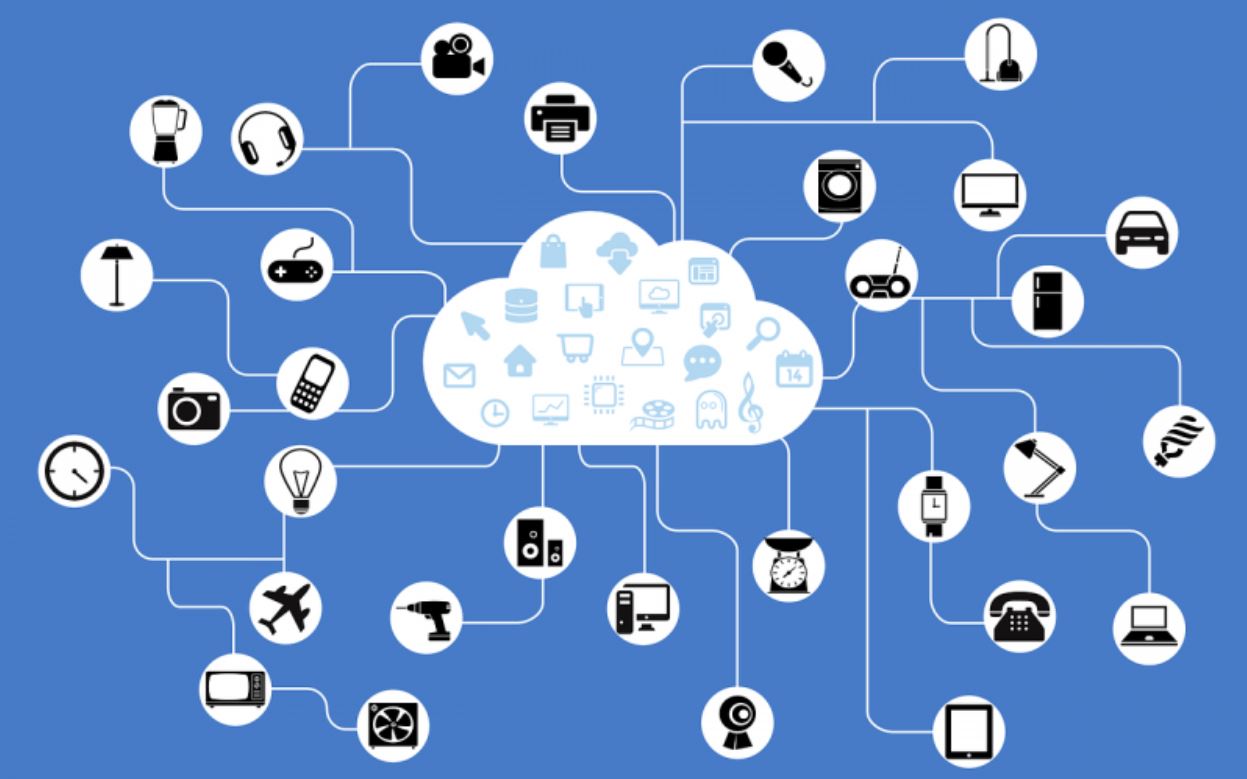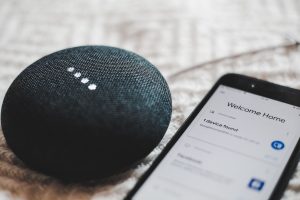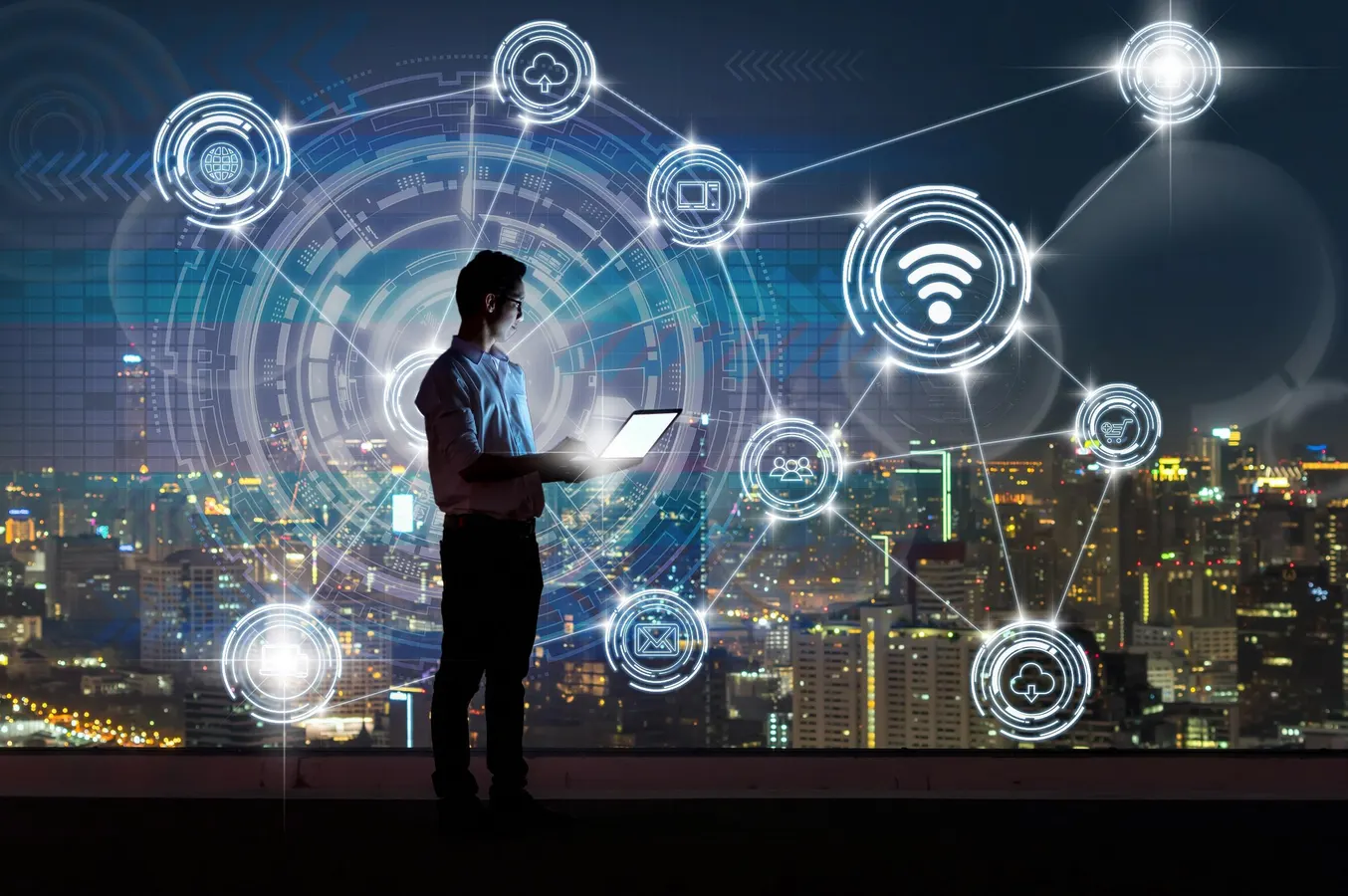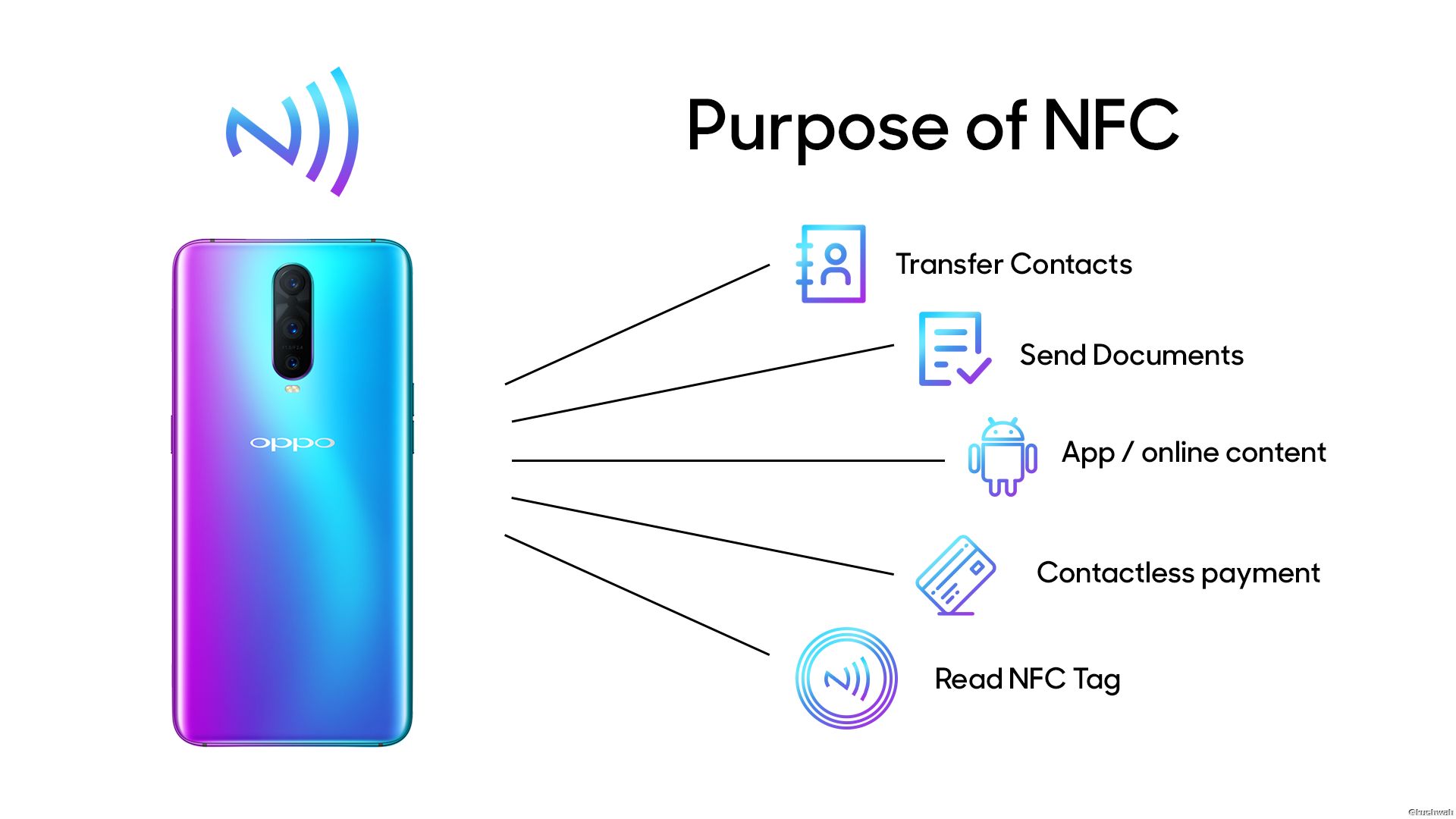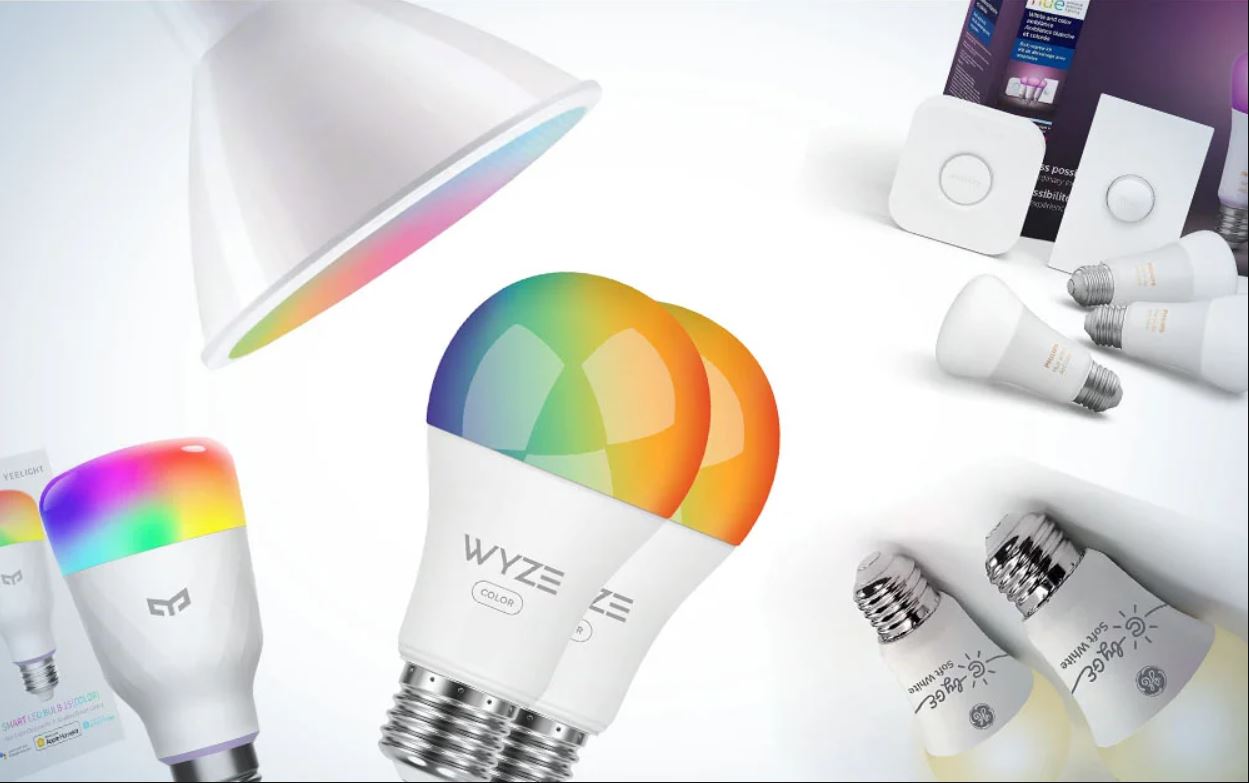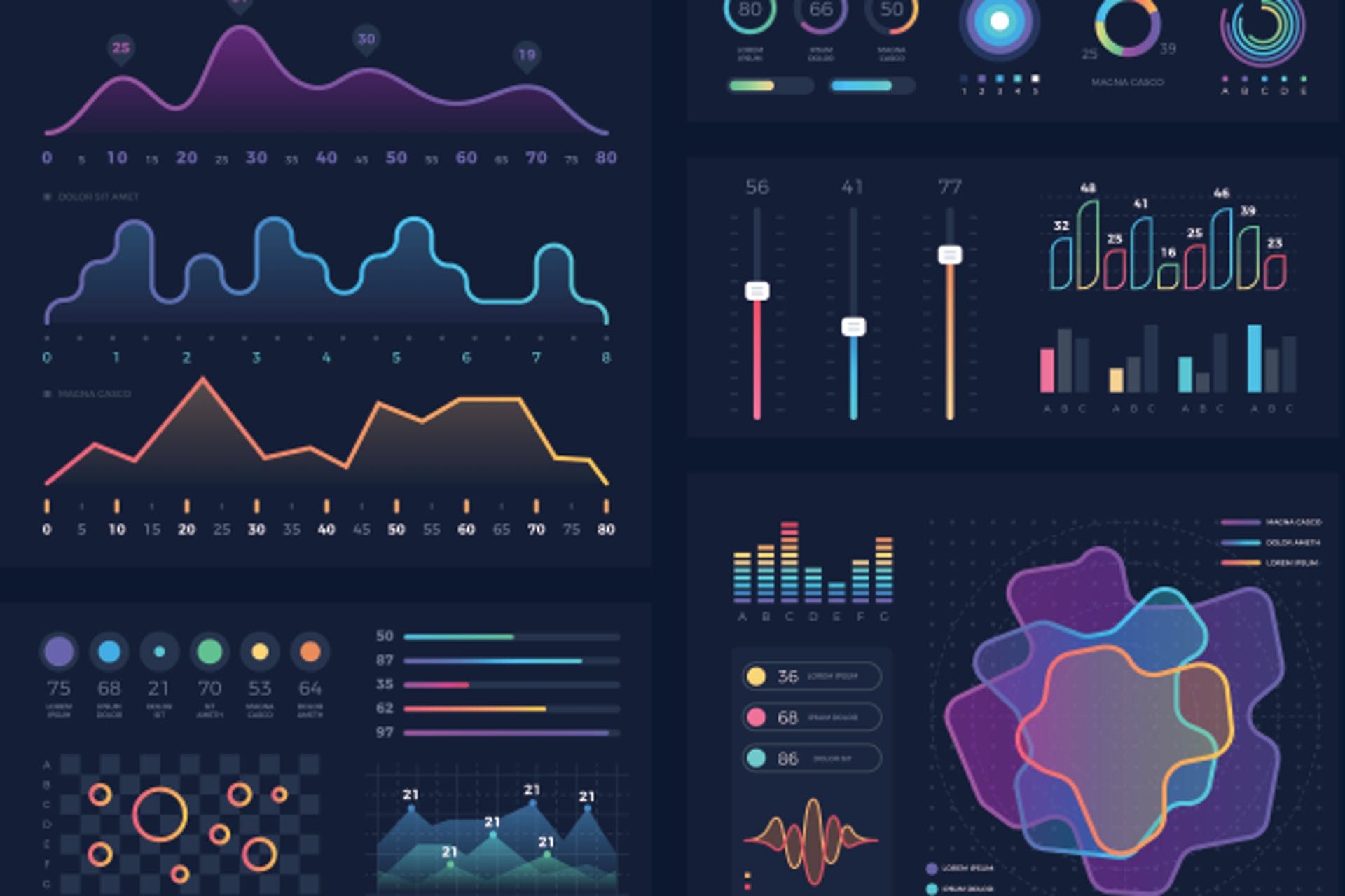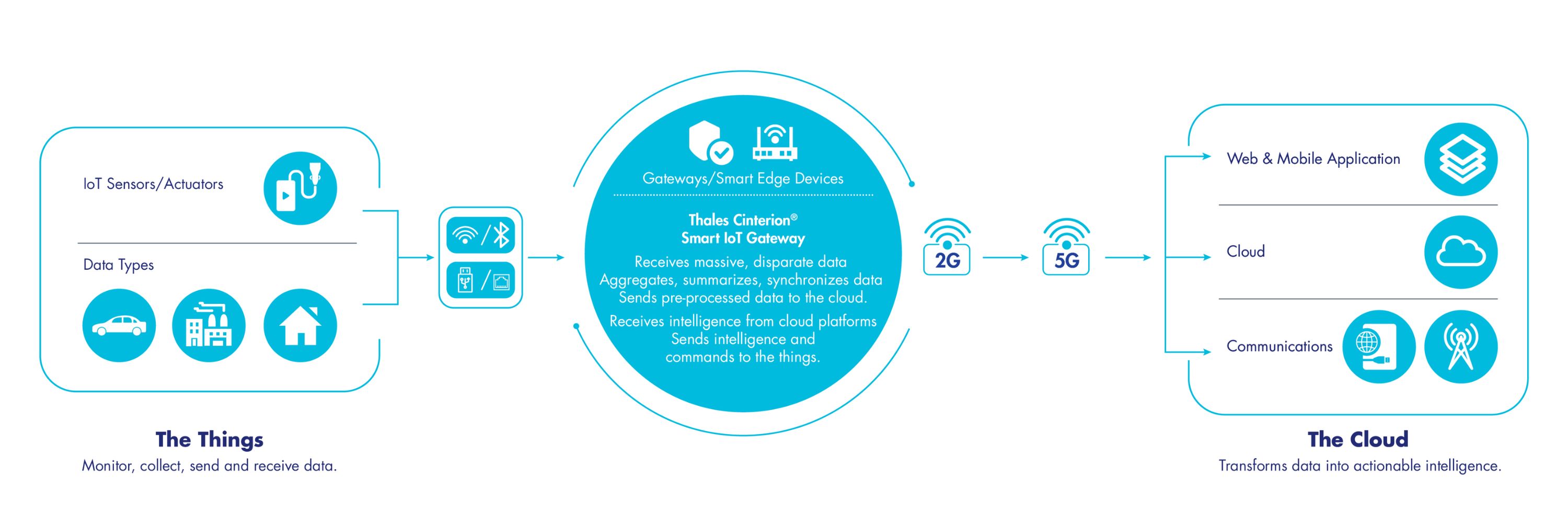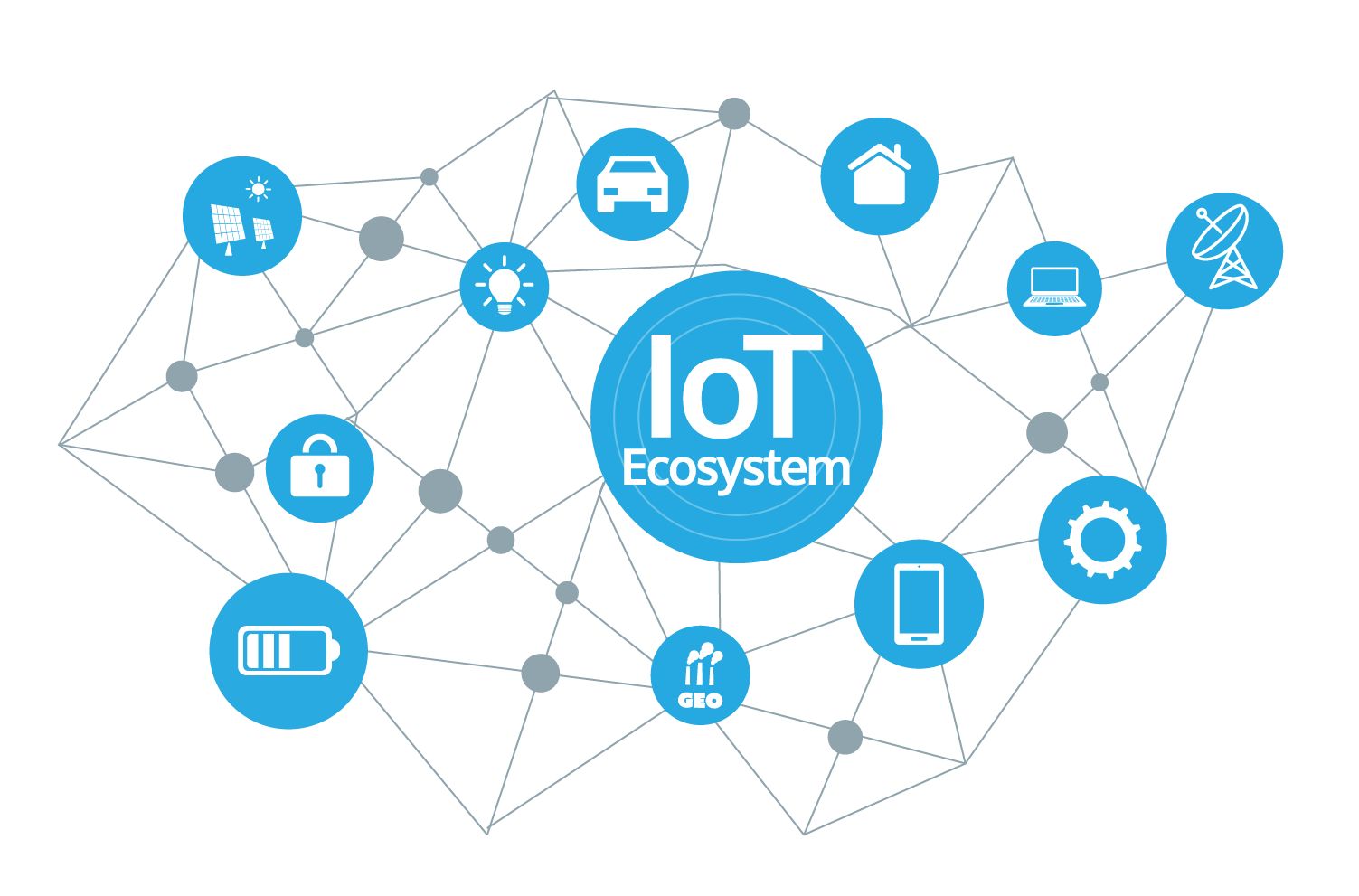Introduction
The Internet of Things (IoT) is revolutionizing the way we live and interact with technology, connecting devices and enabling seamless communication between them. In this digital era, IoT has become an integral part of our daily lives, impacting various industries and transforming the way businesses operate.
At its core, IoT refers to the network of physical objects or “things” embedded with sensors, software, and connectivity, allowing them to collect and exchange data. These objects can include everyday devices such as smartphones, wearable devices, home appliances, and even vehicles.
The fundamental idea behind IoT is to create a web of interconnected devices that can gather and analyze data, allowing for efficient automation, improved decision-making processes, and optimization of various operations.
One of the key aspects of IoT is the ability to connect devices over the internet, eliminating the need for human intervention and promoting autonomous communication. By enabling devices to share data and collaborate with each other, IoT creates a network that is capable of responding to real-time events and making intelligent decisions.
The core elements of IoT include connecting devices, sensors and actuators, connectivity, data processing, data analytics, data security, and privacy concerns. These elements work together to enable the seamless flow of data, allowing businesses and individuals to derive meaningful insights and enhance their operations.
With the increasing availability of internet connectivity and the advancements in technology, IoT has become more accessible and affordable. It has found applications in various sectors, including healthcare, transportation, agriculture, manufacturing, and smart homes.
In the following sections, we will explore the basic elements of IoT and how they contribute to its functioning and overall impact.
What is IoT?
The Internet of Things (IoT) refers to the interconnected network of physical devices, vehicles, appliances, and other objects embedded with sensors, software, and connectivity. These devices collect and exchange data over the internet, enabling them to interact with each other and make intelligent decisions without human intervention.
The main goal of IoT is to create a seamless ecosystem where devices can communicate and share information, ultimately enhancing efficiency, convenience, and productivity. By connecting everyday objects to the internet, IoT expands the capabilities and functionalities of these devices, making them more intelligent and responsive to real-time events.
IoT encompasses a wide range of devices, including smartphones, smartwatches, thermostats, home security systems, wearable fitness trackers, and much more. These devices are equipped with sensors that gather data from the surrounding environment, such as temperature, humidity, motion, and location.
One of the key aspects of IoT is the ability to transfer data over networks, allowing devices to send and receive information in real-time. This data exchange is made possible through various communication technologies, such as Wi-Fi, Bluetooth, cellular networks, and even satellite connections.
IoT has the potential to revolutionize numerous industries and transform the way we live and work. In healthcare, for example, IoT devices can monitor patients remotely, collect vital signs, and alert healthcare providers in case of emergencies. In agriculture, IoT can optimize irrigation systems, monitor soil conditions, and improve crop yields. In transportation, IoT can enable smart traffic management, enhance vehicle safety, and provide real-time navigation.
Furthermore, IoT also plays a crucial role in improving urban infrastructure and creating smart cities. By connecting various city components such as streetlights, waste management systems, and public transportation, cities can become more sustainable, efficient, and responsive to the needs of their residents.
In essence, IoT is the amalgamation of devices, connectivity, and data, all working together to create an interconnected ecosystem. As technology continues to advance, more devices will become part of the IoT network, leading to even more transformative applications and impacts across various industries and aspects of our lives.
Connecting Devices
At the core of the Internet of Things (IoT) is the ability to connect devices and create a network where they can communicate and exchange data seamlessly. This connectivity is what enables the seamless flow of information and enables devices to work together towards a common goal.
Connecting devices in the IoT ecosystem involves several key components. One of the most important elements is the presence of sensors embedded within the devices. These sensors can capture various types of data, such as temperature, humidity, motion, and location. By collecting this data, devices can gather valuable insights about their environment and make informed decisions based on real-time information.
In addition to sensors, IoT devices also require connectivity options to facilitate the exchange of data. There are several communication technologies available for connecting devices in IoT, including Wi-Fi, Bluetooth, cellular networks, and low-power wide-area networks (LPWANs). The selection of a specific connectivity option depends on factors such as range, data transmission speed, power consumption, and the specific requirements of the IoT application.
Another aspect to consider when connecting devices in IoT is the presence of actuators. Actuators are components that allow devices to perform physical actions based on the data they receive. For example, a smart thermostat can receive temperature data from its sensors and then adjust the temperature in a room by activating the heating or cooling system.
Furthermore, the connectivity of devices in IoT extends beyond the local network. Cloud computing plays a crucial role in enabling devices to connect and share data over the internet. Cloud-based platforms provide the infrastructure and resources needed to process and store the vast amount of data generated by IoT devices. By leveraging the power of the cloud, devices can offload complex computational tasks and access valuable resources for data analysis and machine learning algorithms.
Moreover, the concept of edge computing has emerged as a way to enhance the connectivity of devices in IoT. Edge computing involves processing data closer to the source, at the edge of the network, rather than sending it to the cloud. This approach reduces latency and allows for faster decision-making, making it particularly useful in applications where real-time responsiveness is crucial.
Connecting devices in IoT is a multifaceted process that involves sensors, connectivity options, actuators, cloud computing, and edge computing. By establishing robust connections between devices, IoT enables the creation of intelligent systems that can enhance efficiency, automate processes, and improve the overall user experience.
Sensors and Actuators
In the realm of the Internet of Things (IoT), sensors and actuators play a vital role in enabling devices to interact with the physical world. These components work together to gather data from the environment and initiate physical actions based on that data, making IoT devices intelligent and responsive.
Sensors are fundamental building blocks of IoT devices. They are responsible for capturing and detecting various types of data, allowing devices to gather insights about their surrounding environment. Different types of sensors are used in IoT applications, including temperature sensors, humidity sensors, proximity sensors, motion sensors, and many more. These sensors can be embedded within devices or placed in the environment to collect relevant data.
Actuators, on the other hand, are the components that enable devices to perform physical actions based on the data received from sensors. They can activate or control mechanisms, such as motors, valves, relays, or even robotic arms, allowing devices to interact with the physical world. For example, an IoT-based home security system may use motion sensors to detect intruders and actuators to trigger an alarm or lock the doors.
The data gathered by sensors serves as the input for IoT devices to make informed decisions. By monitoring the environment and collecting data in real-time, IoT devices can analyze the information and initiate appropriate responses. For instance, in smart agriculture applications, soil sensors can collect data about moisture levels, and based on this data, IoT devices can automatically control irrigation systems to optimize water usage.
Most IoT devices are multi-sensor systems, utilizing different types of sensors to capture a wide range of data. By combining multiple sensor inputs, devices can obtain a comprehensive understanding of their surroundings and make more accurate and informed decisions.
Actuators, on the other hand, are responsible for transforming data into physical actions. They act as the output mechanisms of IoT devices, allowing them to have a real impact on the physical world. Actuators can be used in various applications, such as controlling appliances, adjusting temperature or lighting, opening or closing doors, and much more.
Together, sensors and actuators form the backbone of IoT devices, enabling them to sense the environment and take actions based on real-time data. The ability to collect and analyze data through sensors and initiate physical actions through actuators results in enhanced automation, improved efficiency, and augmented user experiences.
Connectivity
Connectivity is a foundational element of the Internet of Things (IoT), enabling devices to communicate and share data seamlessly. It refers to the ability of IoT devices to connect, both locally and globally, using various communication technologies and protocols.
IoT devices require connectivity options to establish connections and exchange data with other devices or cloud-based platforms. Several communication technologies are utilized to enable this connectivity, including Wi-Fi, Bluetooth, cellular networks, and low-power wide-area networks (LPWANs).
Wi-Fi, a widely adopted wireless networking technology, allows IoT devices to connect to local networks and the internet. It offers high data transfer speeds and a relatively short range, making it suitable for applications within a specific area or building. Wi-Fi connectivity is commonly found in smart home devices, such as smart speakers, security systems, and home automation hubs.
Bluetooth, another popular wireless technology, enables short-range communication between devices. It is commonly used for connecting IoT devices with mobile devices or other peripherals. For example, Bluetooth connectivity is utilized in wearable fitness trackers or smartwatches to transfer data to smartphones for analysis and tracking.
Cellular networks, such as 3G, 4G, and now, 5G, enable IoT devices to connect and exchange data over long distances. Cellular connectivity is ideal for mobile and remote applications where Wi-Fi or Bluetooth are not feasible. This technology allows IoT devices to stay connected to the internet, even when they are on the move or located in areas without Wi-Fi coverage.
LPWANs have emerged as an efficient and cost-effective connectivity solution for IoT devices requiring wide-range coverage and low power consumption. LPWAN technologies, like LoRaWAN and NB-IoT, provide long-range connectivity with low data rates and power requirements, making them suitable for applications that require long battery life and operate in remote areas.
In addition to the different communication technologies, various protocols are used to facilitate data exchange between IoT devices. These protocols include MQTT (Message Queuing Telemetry Transport), CoAP (Constrained Application Protocol), HTTP (Hypertext Transfer Protocol), and MQTT-SN (Message Queuing Telemetry Transport for Sensor Networks). The choice of protocol depends on factors such as data size, power consumption, network bandwidth, and the specific requirements of the IoT application.
Connectivity is crucial for IoT devices to effectively share data, coordinate actions, and enable interoperability. It allows devices to work together seamlessly, enabling automation, remote monitoring, and control. With advancements in communication technology and the continuous expansion of network coverage, the connectivity options for IoT devices are becoming more robust, efficient, and accessible.
Internet
The Internet is a fundamental component of the Internet of Things (IoT) ecosystem. It serves as the backbone that enables connectivity and data exchange between IoT devices, allowing them to access and share information globally.
The Internet provides the infrastructure for IoT devices to connect and communicate, regardless of their physical location. It acts as a vast network of networks, linking devices, servers, and cloud-based platforms together. Through the Internet, data generated by IoT devices can be transmitted and accessed from anywhere in the world.
IoT devices use the Internet to send and receive data packets, leveraging the existing internet infrastructure. These data packets contain the information collected by sensors and are transmitted through various communication technologies, such as Wi-Fi or cellular networks, to reach their destination. The Internet ensures that the data reaches its intended recipients, enabling seamless communication between devices, cloud platforms, and end-users.
One of the key advantages of utilizing the Internet for IoT connectivity is the global accessibility it provides. IoT devices can be located in different geographic regions, yet they can still connect and interact via the Internet. This enables remote monitoring and control of devices, facilitating real-time decision-making and reducing the need for physical presence.
Furthermore, the Internet allows IoT devices to leverage cloud computing resources for data processing, storage, and analysis. By utilizing the power of the cloud, IoT devices can offload complex computational tasks, access large-scale storage, and process vast amounts of data. This enhances the capabilities of IoT devices, making them more intelligent and efficient in executing various tasks.
Data security is a crucial aspect of IoT, and the Internet plays a vital role in ensuring the secure transmission and storage of data. Encryption protocols and secure communication channels are used for data transfer over the Internet, protecting sensitive information from unauthorized access. Additionally, cloud-based platforms employ robust security measures to safeguard IoT data against potential threats.
As the Internet continues to evolve and advance, innovations like IPv6 (Internet Protocol version 6) are addressing the limitations of IPv4, allowing for a broader range of unique IP addresses. This expansion in addressing capacity is essential for accommodating the growing number of IoT devices that will be connected to the Internet in the future.
In summary, the Internet is the underlying infrastructure that enables the connectivity and data exchange in the IoT ecosystem. It connects devices, cloud platforms, and users across the globe, facilitating real-time communication, data analysis, and remote control. The Internet provides the foundation for the seamless integration of IoT devices into our interconnected world.
Communication Protocols
Communication protocols play a crucial role in the Internet of Things (IoT) ecosystem, facilitating the exchange of data between devices and enabling interoperability. These protocols define the rules and standards for transmitting and receiving information, ensuring seamless communication and data transfer within the IoT network.
Various communication protocols are used in IoT applications, each designed to cater to specific requirements, such as data size, power consumption, network bandwidth, and the context in which the devices operate. Some of the commonly used protocols in IoT include MQTT (Message Queuing Telemetry Transport), CoAP (Constrained Application Protocol), HTTP (Hypertext Transfer Protocol), and MQTT-SN (Message Queuing Telemetry Transport for Sensor Networks).
MQTT is a lightweight publish-subscribe-based protocol that is widely used for communication between remote devices with constrained resources. It is designed to be efficient in terms of bandwidth and power consumption, making it ideal for resource-constrained IoT devices. MQTT allows devices to publish data to a central broker and subscribe to specific topics to receive relevant information.
CoAP, on the other hand, is a lightweight protocol based on the REST architecture, specifically designed for resource-constrained IoT devices. CoAP enables devices to interact using simple commands, similar to HTTP, but with reduced overhead. It is particularly suited for constrained environments where communication and resource utilization need to be highly efficient.
HTTP, a protocol commonly used for web communication, is also utilized in IoT applications. Devices can send HTTP requests to fetch data from web servers or transmit data to web-based APIs. HTTP is widely supported and easily integrated into existing web infrastructure, making it a convenient choice for IoT devices to communicate with cloud platforms or web services.
MQTT-SN is an extension of the MQTT protocol specifically designed for sensor networks. It offers similar functionalities to MQTT but operates over non-TCP/IP networks, such as Zigbee or Bluetooth. MQTT-SN supports the integration of small, low-power sensors into the IoT ecosystem, extending the reach of MQTT to resource-constrained networks.
In addition to these specific protocols, other standardized protocols, such as Zigbee, Z-Wave, and Bluetooth Low Energy (BLE), are widely used for communication in IoT applications. These protocols cater to specific needs, such as low power consumption, short-range communication, and interoperability with a wide range of devices.
Interoperability is a significant consideration in IoT ecosystems, as devices from different manufacturers and with varying capabilities need to communicate seamlessly. To address this, industry consortia and standardization bodies are working on developing common communication protocols and frameworks, such as the Open Connectivity Foundation (OCF) and the Industrial Internet Consortium (IIC).
Ultimately, communication protocols in the IoT landscape ensure that devices can exchange data efficiently and effectively, enabling seamless connectivity and interoperability. By utilizing the appropriate protocol for a specific IoT application, devices can communicate reliably, optimize resource utilization, and enhance the overall functionality of the IoT system.
Data Processing
Data processing is a critical element of the Internet of Things (IoT) ecosystem, as it involves the collection, organization, and analysis of the vast volumes of data generated by IoT devices. The processing of this data enables the extraction of valuable insights and the generation of meaningful information that can aid decision-making and drive actionable outcomes.
IoT devices continuously gather data from various sources, including sensors, actuators, and connected systems. This data may include environmental measurements, user interactions, machine status, and more. To make sense of this data, it needs to be processed and transformed into valuable information.
Data processing in IoT typically involves several stages. The first stage is data collection, where IoT devices gather raw data from their surroundings using embedded sensors. This data is then transmitted or stored for further processing.
Once the data is collected, it undergoes a series of processes to extract meaningful information. These processes can include data filtering, aggregation, transformation, and normalization. Filtering eliminates noise or irrelevant data points, while aggregation combines multiple data points to provide a broader perspective. Transformation involves converting data formats or units to ensure consistency, while normalization scales data to facilitate accurate comparisons and analysis.
After the initial processing steps, the data is ready for analysis. In IoT, data analysis can be performed at different levels: local and cloud. Local analysis involves processing data on the edge devices or gateways, closer to the data source. This approach reduces latency and allows for real-time decision-making. Cloud analysis, on the other hand, utilizes the computational power and scalability of cloud computing platforms. It enables in-depth analysis, complex algorithms, and big data processing capabilities.
Data processing in IoT also incorporates techniques such as machine learning and artificial intelligence (AI) to uncover patterns, trends, and anomalies in the data. These techniques enable predictive and prescriptive analytics, where IoT devices can anticipate future events or recommend optimal actions based on historical data and learning algorithms.
Furthermore, the processed data can be used to generate visualizations, reports, and insights that help stakeholders understand the underlying trends and make informed decisions. Visualization techniques, such as charts, graphs, and dashboards, simplify complex data and provide a clear representation of the information being analyzed.
Data processing in IoT is not limited to real-time analysis. Historical data can be stored and analyzed over time to derive insights and identify long-term trends. This data can be utilized for optimization, forecasting, predictive maintenance, and other strategic purposes.
Overall, data processing in IoT involves the transformation of raw data into meaningful information through collection, filtering, aggregation, transformation, analysis, and visualization. It enables organizations and individuals to derive valuable insights, make data-driven decisions, and unlock the true potential of the IoT ecosystem.
Cloud Computing
Cloud computing plays a pivotal role in the Internet of Things (IoT) ecosystem, providing a scalable and powerful infrastructure for data storage, processing, and analysis. By leveraging cloud services, IoT devices can offload computational tasks, access extensive storage capabilities, and seamlessly integrate with other applications and services.
The core principle of cloud computing is the delivery of computing resources, including storage, processing power, and software, over the internet on-demand. This eliminates the need for local infrastructure and enables IoT devices to use cloud services as virtual extensions of their capabilities.
One of the key benefits of cloud computing in IoT is the ability to handle large volumes of data generated by IoT devices. IoT devices generate immense amounts of data, and the cloud provides a scalable and flexible storage environment to accommodate this data. This enables data persistence, historical analysis, and facilitates long-term insights and decision-making.
Cloud computing also offers extensive computational capabilities, allowing for complex analytics, machine learning, and artificial intelligence algorithms to be executed efficiently. Powerful cloud-based algorithms can process and analyze vast amounts of data, enabling real-time insights, predictive analytics, anomaly detection, and automation in IoT applications.
By utilizing the cloud, IoT devices can benefit from high availability and fault tolerance. Cloud service providers employ redundancy measures to ensure data integrity and minimize downtime. This helps maintain continuous connectivity and reliable access to data and services, enhancing the overall reliability and performance of IoT solutions.
The cloud provides scalability and elasticity, enabling IoT applications to accommodate changing demands, spikes in traffic, or sudden data influx. With cloud resources, IoT devices can dynamically allocate compute and storage resources to match the workload requirements, avoiding constraints imposed by physical infrastructure limitations.
Moreover, cloud computing offers cost-efficient solutions for IoT deployments. By utilizing cloud platforms, organizations can avoid significant upfront investments in infrastructure and hardware. The pay-as-you-go model allows for more flexibility and cost optimization, as organizations only pay for the resources they consume.
Furthermore, cloud computing enables seamless connectivity and integration with other cloud services, APIs, and applications. IoT devices can easily interact with other cloud-based services, such as data analytics platforms, machine learning models, or external applications, for extended functionality and enhanced automation.
Security and privacy are important considerations in IoT deployments, and cloud computing includes robust security measures. Cloud service providers implement authentication, encryption, access control, and data protection mechanisms to ensure the confidentiality, integrity, and availability of IoT data.
In summary, cloud computing provides a scalable, flexible, and cost-efficient infrastructure for IoT applications. It empowers IoT devices with vast storage capabilities, computational resources, and seamless connectivity to other services and applications. By leveraging the power of the cloud, organizations can optimize data processing, analytics, and decision-making, and unlock the full potential of their IoT solutions.
Edge Computing
Edge computing is a distributed computing paradigm that brings computation closer to the data source in the Internet of Things (IoT) ecosystem. It aims to reduce latency, enhance real-time processing, reduce bandwidth consumption, and improve overall performance by processing data at the edge of the network, closer to IoT devices.
Traditionally, IoT devices send data to centralized cloud servers for processing and analysis. However, in certain scenarios, this approach may not be optimal due to delays caused by network latency or the sheer volume of data being transmitted. Edge computing addresses these challenges by shifting some of the processing and analysis tasks from the cloud to local devices or gateways.
Edge computing enables faster decision-making by processing data in real-time at the edge of the network. By reducing the distance between the computation and the data source, latency is minimized, enabling quicker responses and enabling time-sensitive actions. This is especially important in applications where real-time responsiveness is critical, such as in autonomous vehicles, industrial automation, or healthcare monitoring.
Another advantage of edge computing is the reduction of bandwidth consumption. Instead of sending large volumes of raw data to the cloud for analysis, IoT devices can perform initial data processing and filtering at the edge. This way, only relevant and condensed data is sent to the cloud, optimizing network bandwidth and reducing transmission costs.
Edge computing also enhances data privacy and security. By processing data locally, sensitive information can be kept within the local network, reducing the exposure to potential security threats. This is particularly beneficial in applications where data privacy and compliance regulations are paramount, such as in healthcare or finance.
Furthermore, edge computing enables offline operation and resiliency, even when connectivity to the cloud is lost. Edge devices can continue to process and analyze data, execute local applications, and make autonomous decisions, ensuring uninterrupted operation. This is particularly important in scenarios where reliable internet connectivity may not always be available or where uninterrupted service is critical.
Edge computing architecture typically includes edge devices or gateways that have computational capabilities and storage resources. These devices can perform tasks such as data preprocessing, filtering, aggregation, and even hosting local applications and services. They can also act as intermediaries between IoT devices and the cloud, facilitating communication and enabling localized decision-making.
Edge computing does not entirely replace cloud computing but rather complements it. While edge computing handles real-time and immediate decision-making, the cloud can be utilized for advanced analytics, historical data analysis, and long-term insights. The combination of edge and cloud computing creates a powerful, distributed architecture that optimizes performance, resource utilization, and scalability.
In summary, edge computing brings computation closer to IoT devices, reducing latency, enhancing real-time processing, minimizing bandwidth consumption, improving data privacy and security, and enabling offline operation. It complements cloud computing by distributing tasks between the edge and the cloud, optimizing the performance and efficiency of IoT applications.
Data Analytics
Data analytics plays a pivotal role in extracting meaningful insights and driving informed decision-making within the Internet of Things (IoT) ecosystem. By leveraging advanced analytical techniques, IoT data can be processed, analyzed, and transformed into actionable intelligence, enabling organizations to optimize operations, predict outcomes, and drive innovation.
IoT devices generate vast amounts of data from various sources, such as sensors, actuators, and connected systems. Data analytics helps make sense of this data by identifying patterns, trends, and correlations that might not be apparent through traditional analysis methods.
One of the key aspects of data analytics in IoT is real-time analysis. By performing analytics at the edge or in the cloud, the data can be processed immediately, enabling real-time decision-making and immediate action. This is valuable in time-sensitive use cases, such as predictive maintenance, anomaly detection, or autonomous systems that require split-second responses.
Descriptive analytics is another important aspect of IoT data analysis. It involves summarizing and visualizing historical data to understand past trends and events. This analysis provides valuable insights into operational efficiency, performance metrics, and historical patterns, which can help organizations optimize processes and identify areas for improvement.
Predictive analytics takes data analysis a step further by using statistical models and machine learning algorithms to forecast future outcomes. By analyzing historical data and identifying patterns, predictive analytics can help anticipate trends, forecast demands, and predict failures. This enables proactive decision-making, efficient resource allocation, and predictive maintenance.
Prescriptive analytics goes beyond predicting outcomes and provides recommendations on the best course of action. By considering multiple factors, constraints, and desired outcomes, prescriptive analytics helps organizations make optimized, data-driven decisions. For example, prescriptive analytics can recommend the most efficient route for delivery fleets based on real-time traffic and weather data.
Data analytics in IoT also enables anomaly detection, which involves identifying and flagging deviations, outliers, or unusual patterns in the data. Anomaly detection can be used to detect potential system failures, security breaches, or abnormal behavior, enabling timely intervention and proactive measures.
IoT data analytics is often complemented by data visualization techniques, such as charts, graphs, and dashboards. Visual representations of data make it easier to understand complexities, patterns, and trends, and facilitate data-driven decision-making at various levels of an organization.
The availability of cloud computing resources has significantly enhanced the capabilities of IoT data analytics. With cloud-based platforms, organizations can leverage scalable storage and computational power to analyze vast amounts of data efficiently. Additionally, the cloud provides a collaborative and accessible environment for data scientists and analysts to develop and deploy analytics models and algorithms.
Data analytics fuels innovation and drives continuous improvement in the IoT ecosystem. By transforming raw data into meaningful insights and actionable intelligence, organizations can optimize operations, enhance customer experiences, and uncover new revenue streams. As IoT continues to evolve and generate more data, data analytics will remain an indispensable tool for extracting value from the vast IoT data landscape.
Data Security
Data security is a paramount concern in the Internet of Things (IoT) ecosystem, as it involves safeguarding the sensitive and valuable data generated by IoT devices. With the increasing number of connected devices and the exchange of large volumes of data, ensuring data security is crucial to protect privacy, prevent unauthorized access, and maintain the integrity of IoT systems.
One of the primary challenges in IoT data security is the sheer scale and diversity of devices and data. IoT devices span across various industries, from healthcare and transportation to smart homes and industrial automation, each with unique security requirements. Securing data in this heterogeneous environment requires a multi-faceted approach that encompasses various layers of security measures.
Authentication is a cornerstone of IoT data security. Strong authentication mechanisms ensure that only authorized devices and users can access and transmit data. This can be achieved through the use of secure protocols, digital certificates, biometrics, or two-factor authentication methods, allowing for safe and trusted connections between devices and systems.
Data encryption is another critical aspect of IoT security. By encrypting data at rest and during transmission, sensitive information remains protected, even if it falls into the wrong hands. Encryption mechanisms, such as symmetric and asymmetric encryption, play a vital role in ensuring data confidentiality and integrity.
Access control is essential to prevent unauthorized access to IoT devices and data. Role-based access control (RBAC), access control lists (ACLs), and fine-grained authorization mechanisms can be implemented to restrict access to specific resources and functionalities based on user roles and permissions. Access control helps mitigate the risk of data breaches and unauthorized manipulation of IoT systems.
Secure communication protocols are vital for protecting data transmitted between IoT devices, gateways, and cloud platforms. Protocols such as Transport Layer Security (TLS) and Secure Socket Layer (SSL) provide encryption and authentication for secure data exchange. The use of secure communication protocols prevents eavesdropping, tampering, and man-in-the-middle attacks.
IoT devices should also be regularly updated and patched to mitigate vulnerabilities and ensure the latest security measures are in place. Manufacturers and developers need to implement secure coding practices, conduct thorough security testing, and release timely updates to address security flaws and vulnerabilities that may arise.
Physical security is equally important in IoT deployments. Physical tampering or theft of IoT devices can lead to unauthorized access and compromise data security. Implementing measures such as tamper-evident packaging, secure enclosure designs, and surveillance can help protect IoT devices and the data they generate.
Data governance and compliance are essential aspects of IoT data security. Organizations need to establish data governance policies, adhere to privacy regulations such as the General Data Protection Regulation (GDPR), and implement measures to ensure data protection and privacy. By establishing robust data governance practices, organizations can build trust with end-users and demonstrate accountability in handling sensitive data.
Continuous monitoring and threat detection are crucial to identify and respond to potential security breaches. With the volume and complexity of IoT data, employing advanced analytics, anomaly detection, and security information and event management (SIEM) systems can help identify suspicious activities, detect anomalies, and trigger automated response mechanisms.
Lastly, creating a culture of security awareness is essential. Organizations and users should be educated about potential security risks, best practices, and the importance of data security. Training and awareness programs can help mitigate human error and ensure that security measures are consistently followed.
Overall, robust data security measures are essential to protect sensitive IoT data, maintain privacy, and ensure the integrity of IoT systems. By implementing comprehensive security practices, organizations can build trust, address regulatory requirements, and capitalize on the transformative potential of the IoT ecosystem.
Privacy Concerns
Privacy is a critical concern in the Internet of Things (IoT) ecosystem, as the massive amounts of data collected by IoT devices raise significant privacy challenges. The collection, storage, and sharing of personal information through interconnected devices can potentially expose individuals to privacy risks and violations if not properly managed.
One of the primary privacy concerns in IoT is the collection and use of personal data. IoT devices often gather sensitive information such as location data, health records, biometric data, and personal preferences. Ensuring that this data is collected transparently, with user consent, and used only for its intended purpose is crucial in maintaining privacy.
Transparency and informed consent play a crucial role in addressing privacy concerns. IoT devices and applications should provide clear and understandable privacy policies and terms of service, outlining how data is collected, processed, stored, and shared. Users should have the ability to review and control the data they share and be informed about the consequences of data collection and usage.
Data minimization is another important privacy principle in IoT deployments. It involves collecting only the necessary data required for the intended purpose and avoiding the collection of excessive or unnecessary data. By implementing data minimization practices, organizations can reduce privacy risks and enhance user trust by limiting the exposure of personal information.
Anonymization and pseudonymization techniques can be employed to further protect privacy. Anonymizing data removes personally identifiable information, making it impossible to identify individuals. Pseudonymization replaces identifiable data with artificial identifiers, ensuring privacy while still allowing for useful analysis and processing of data.
Secure data storage and transmission are critical to safeguard privacy in IoT. Encryption, access controls, and secure communication protocols should be implemented to protect personal data from unauthorized access or interception. IoT devices should also be protected from physical tampering to prevent data breaches and unauthorized access to sensitive information.
Interoperability standards can help address privacy concerns by ensuring that devices and platforms can work together securely and effectively. Common standards and protocols can facilitate the secure sharing and processing of data while maintaining privacy controls and consent management mechanisms across different IoT devices, applications, and ecosystems.
Privacy by design is a principle that emphasizes incorporating privacy considerations at the early stages of IoT system design and development. By designing systems with privacy in mind, organizations can embed privacy features and safeguards into IoT devices, applications, and infrastructure, reducing privacy risks and promoting user trust.
Regulatory frameworks, such as the General Data Protection Regulation (GDPR) in Europe, provide guidelines and requirements for protecting privacy in IoT deployments. Organizations need to comply with applicable privacy laws and regulations and ensure that privacy practices align with the legal requirements of the jurisdictions in which they operate.
Education and awareness are essential for addressing privacy concerns in IoT. Individuals should be informed about the privacy risks associated with IoT devices, understand their rights, and be equipped with knowledge and tools to protect their privacy. Additionally, organizations should provide clear guidelines and training to employees regarding privacy practices and responsibilities when handling personal data.
By addressing privacy concerns proactively, organizations can build trust with their users and ensure that the benefits of IoT can be realized while upholding privacy rights. Privacy should be considered a fundamental element in the design, deployment, and management of IoT systems to create a secure and privacy-respecting ecosystem.
Impact of IoT
The Internet of Things (IoT) is revolutionizing the way we live, work, and interact with technology. Its impact extends across various industries and domains, transforming processes, enhancing efficiency, and creating new opportunities for innovation.
One of the significant impacts of IoT is the optimization of various operations. IoT devices and systems enable the collection of real-time data, allowing organizations to monitor and analyze their processes and assets with precision. This data-driven approach enhances decision-making, improves resource allocation, and enables proactive maintenance. For example, in manufacturing, IoT enables predictive maintenance, reducing downtime and increasing operational efficiency.
IoT also empowers the creation of smart and connected cities. By implementing IoT technologies, cities can optimize energy distribution, monitor and manage traffic flow, improve waste management, and enhance overall sustainability. Smart city initiatives lead to cost savings, enhanced living conditions, and improved urban planning and resource management.
In healthcare, IoT has the potential to revolutionize patient care. Monitoring devices, wearable technologies, and IoT-enabled medical equipment allow for remote patient monitoring, real-time health data tracking, and improved patient outcomes. IoT devices can provide early warning signs, enabling timely interventions and reducing healthcare costs.
Agriculture is another industry deeply impacted by IoT. IoT devices and sensors enable precision agriculture, optimizing irrigation, fertilization, and pest control based on real-time data. This leads to improved crop yields, reduced resource consumption, and more sustainable farming practices.
In transportation, IoT is transforming the way we navigate, travel, and optimize transportation systems. With IoT devices embedded in vehicles, traffic management systems, and public transportation infrastructure, we can enhance road safety, optimize traffic flow, and reduce congestion. IoT-enabled logistics systems provide real-time tracking for efficient supply chain management.
IoT also impacts the energy sector, enabling smart grids and energy management systems. IoT devices help monitor energy consumption patterns, enable demand-response mechanisms, and improve energy efficiency in buildings and industries. By optimizing energy usage, IoT contributes to reducing carbon footprints and promoting sustainability.
In the consumer space, IoT devices are increasingly integrated into our daily lives. From smart homes with connected appliances, voice-activated assistants, and home security systems to wearable devices tracking our health and fitness, IoT enhances convenience, improves entertainment experiences, and augments personal productivity.
Moreover, IoT drives innovation and creates new business opportunities. Startups and companies are developing innovative IoT solutions that disrupt traditional business models and provide valuable services and products. IoT is paving the way for new market segments, allowing organizations to better understand customer behavior, personalize experiences, and deliver targeted services.
However, alongside the benefits, IoT also presents challenges related to privacy, security, and data governance. Addressing these challenges is crucial to fully realize the potential of IoT while ensuring the protection of user privacy and data security.
The impact of IoT continues to evolve and expand, shaping the way we live and work. As IoT technologies advance, more industries and sectors will adopt IoT solutions, further transforming and optimizing processes, enhancing efficiency, and improving the overall quality of life.
Conclusion
The Internet of Things (IoT) has rapidly emerged as a transformative force, connecting devices and unlocking new opportunities for businesses and individuals alike. By harnessing the power of IoT, we can optimize operations, enhance efficiency, improve decision-making, and create innovative solutions that positively impact various industries and aspects of our lives.
From connecting devices to sensors and actuators, from leveraging connectivity options to utilizing cloud and edge computing, the basic elements of IoT work together to enable seamless communication and data processing. Data analytics and security play crucial roles in deriving meaningful insights and protecting the privacy of the sensitive data generated by IoT devices.
The impact of IoT is far-reaching and encompasses diverse domains. IoT revolutionizes industries such as healthcare, transportation, agriculture, manufacturing, and energy by enhancing processes, enabling remote monitoring, improving resource allocation, and driving sustainability.
Moreover, IoT is transforming cities into smart and connected ecosystems, optimizing energy usage, improving traffic management, and ensuring efficient resource allocation. At the consumer level, IoT devices have become an integral part of our daily lives, enhancing convenience, entertainment experiences, and personal productivity.
IoT also fuels innovation and creates new business opportunities. Startups and organizations are leveraging IoT to develop disruptive solutions, personalize customer experiences, and drive targeted services. As IoT technologies evolve, more industries will adopt IoT solutions and further capitalize on the potential of interconnected devices.
However, the proliferation of IoT also presents challenges, particularly in areas of privacy, security, and data governance. Ensuring transparent data collection, implementing strong data security measures, and fostering a culture of privacy awareness are crucial steps in building trust and mitigating risks associated with IoT deployments.
In conclusion, the Internet of Things (IoT) has revolutionized the way we live, work, and interact with technology. By connecting devices, enabling data-driven decision-making, and driving innovation, IoT has the potential to significantly enhance efficiency, sustainability, and personal experiences across various industries and aspects of our lives. Embracing the opportunities of IoT while addressing privacy and security concerns will allow us to fully unlock the potential of this transformative technology.







